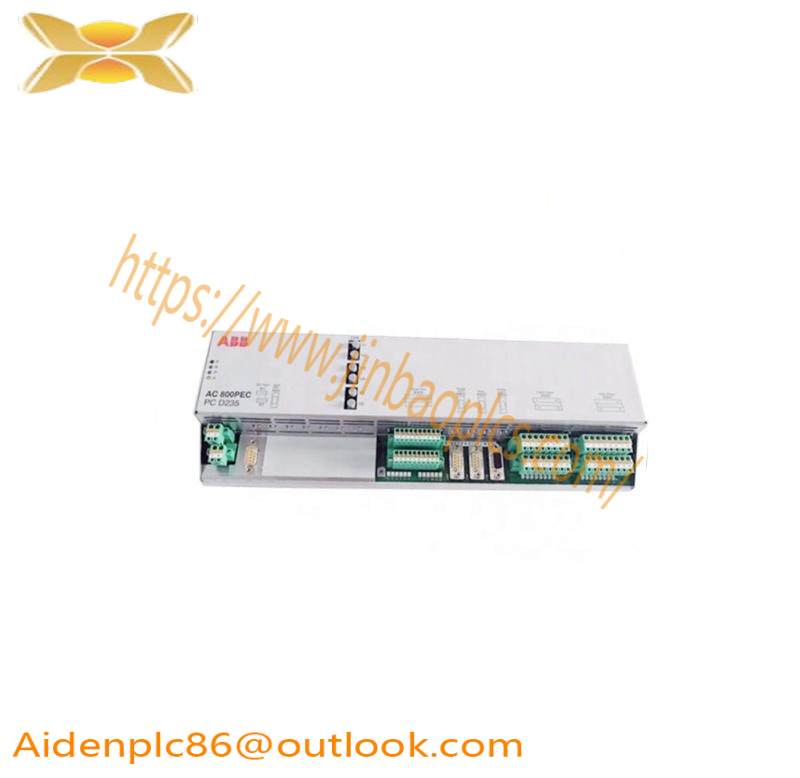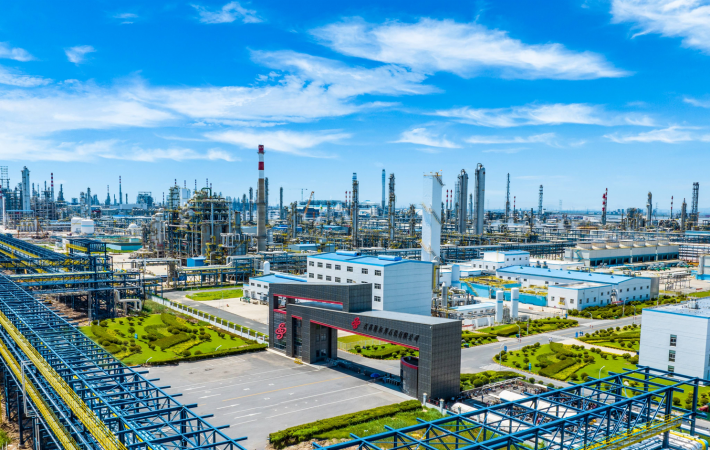AC800PEC Controller GFD563A102 3BHE046836R0102 Scalability in Performance
Your process defines the required performance level. Several preconfigured software packages are available for easy and straightforward engineering.
DCS (Distributed Control System)
• Processing cycle times down to 1 ms
• Use of slow I/O
• Programming in Control Builder HMI (Human Machine Interface)
• Processing cycle times down to 1 ms
• Use of slow and fast I/O
• Programming of interface in Control Builder
• Nearly all common field busses supported
• Hardware time stamping available upon request PLC (Programmable Logic Controller)
• Processing cycle times down to 1 ms
• Use of fast and slow I/O
• Programming in Control Builder PAC (Programmable Automation Controller)
• Cycle times down to 100 μs
• Use of fast and slow I/O
• Programming in MATLAB®/Simulink® and
Control Builder
Process interfaces for any speed The AC 800PEC provides two kinds of I/O – fast and slow. The fast I/O system covers read and write operations requiring less than 1 ms, and the slow I/O system covers speeds above 1 ms.
The fast I/O system is AC 800PEC specific, using devices connected exclusively via fiber optic links, and brings substantial advantages compared to electric concepts:
• Fast communication between controller and I/O devices
• High immunity to electromagnetic interference
• Potential-free connections, making isolating transmitters obsolete
The slow I/O modules from ABB’s S800 system can be added to any configuration, depending on project needs.
Versatile and reliable The AC 800PEC adapts to any application
Seamless integration into plant control In today’s demanding market, a controller must not only deliver maximum performance but also provide transparency. In this respect, the
AC 800PEC provides a large range of possibilities. Integrated communication ensures transparent, plant-wide data exchange and control – from overall plant control to separate processes. Use of ABB’s System 800xA with the powerful AC 800PEC controller permits uniform automation throughout the plant, seamlessly integrating advanced solutions into the process control system. The AC 800PEC provides connectivity, using either native (built-in) or add-on functionality. Native (depending on the configuration):
• MMS
• Modbus TCP Slave
• IEC61850
• ABB Fast Fiber Optic Link
• ABB Drivebus (DDCS)
• IbaPDA
• Optical Modulebus (S800)
• CANopen
Add-on
Using ABB CEX Modules:
• ABB Drivebus (DDCS)
• Profibus Master DPV1
• Modbus RTU
• S100 I/O
• Masterbus 300
Using Anybus modules
• CANopen
• ControlNet
• DeviceNet
• Profibus Slave
• Profibus Slave DPV1
• Profibus Master DPV1
• Profinet I/O
• EtherCAT Slave
• Ethernet/IP
Well-suited to a harsh environment – the AC 800PEC
Since the AC 800PEC controller is used in different ABB solutions, there is a huge installed base, which enables the extraction of long-term lifecycle experiences.
Traction, with its particularly harsh environmental conditions, is one of the most important applications of the AC 800PEC.
The controller operates through a wide temperature range (-40 to +70 °C), with vibrations according to traction standards. The compact solution is the ideal response to the demands of restricted spaces and allows integration of the processing unit together with all the I/O’s in the same compact hardware device.
Reliability is a must – the AC 800PEC in powergeneration
Typically, excitation systems are used for generator control in power plants where high reliability is the no. 1 requirement. Due to the very short process cycles, traditional redundancy concepts are no longer applicable.
The modular architecture of the AC 800PEC not only greatly reduces the complexity of the overall system, but redundant subsystems also provide increased reliability. Should a problem occur in one subsystem, the main controller switches over to the remaining subsystems, which are scaled in such a way that the overall task can still be fulfilled. Should the main controller fail, a second controller is available in hot-standby.The modular architecture of the AC 800PEC not
only greatly reduces the complexity of the overall system, but redundant subsystems also provide increased reliability. Should a problem occur in one subsystem, the main controller switches over to the remaining subsystems, which are scaled in such a way that the overall task can still be fulfilled. Should the main controller fail, a second controller is available in hot-standby.
Related recommendations:
PPD113 3BHE023584R2634
PPD114B1022 3BHE020570R1022
PPD113 B01-26-111000 3BHE023784R2630
3BHE020570R1022 PPD114 B1022
3BHE020455R0001 – PPD103 B01
3BHE024820R0101 PPD234 A101
3BHE041576R3011 PPD517 A3011
3BHE024820R0101 PPD234 A101
AC800F PM803F
PCD231 – 3BHE025541R0101
PCD231B101 3BHE025541R0101
PCD230 A101
PCD PCD2000 8R38-2031-21-3002
PCD230 A101
3BHE022293R0101 – PCD232A
3BHE022291R0101 – PCD230A
3BHE025541R0101 PCD231B
3BHE032025R0101 PCD235A101
more…..




Leave a comment
Your email address will not be published. Required fields are marked *